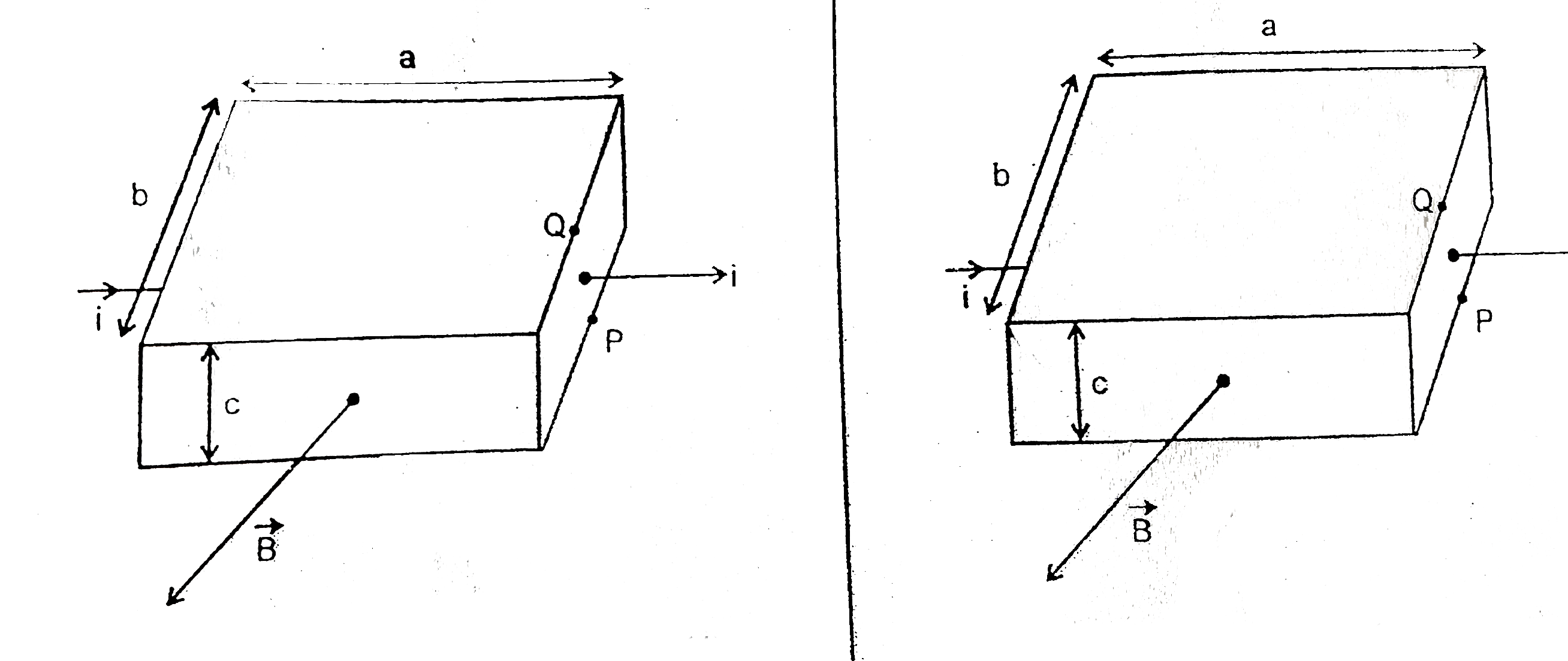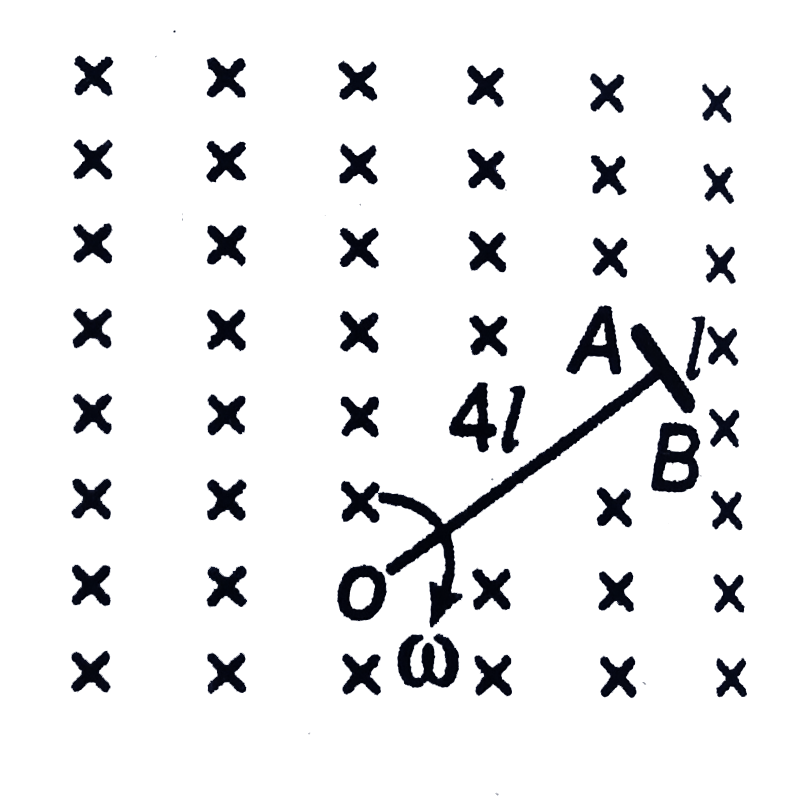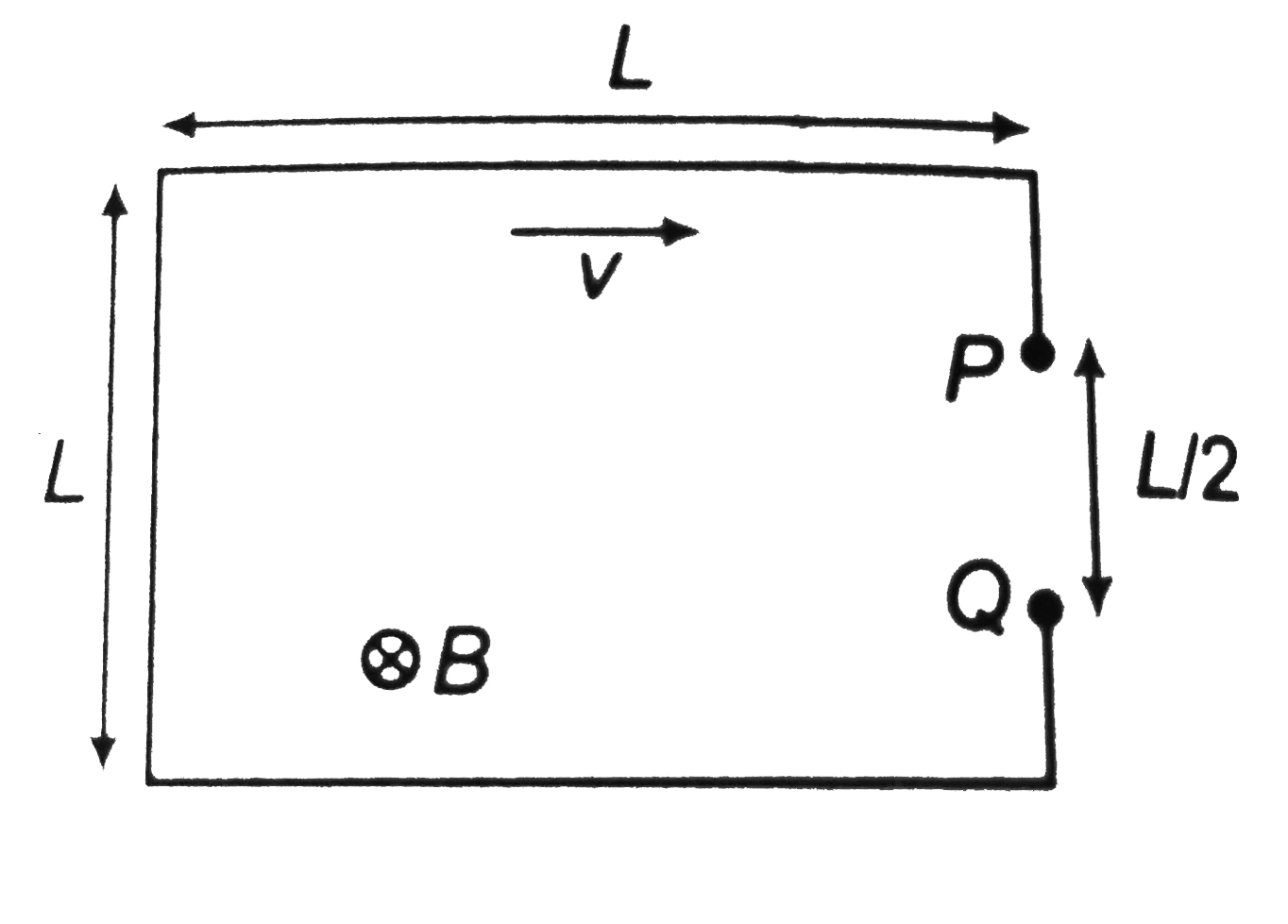A current flows through a rectangular conductor in the presence of uniform magnetic field B pointing out of the page as shown. Then the potential difference VP−VQ is equal to (assume charge carriers in the conductor to be positively charged moving with a drift velocity of v )

Bvb
−Bvb
Bve
−Bve
The correct Answer is:C
|ε|=Blv where l is the edge perpendicular to both B and →v i.e.c.
∴|ε|=Bvc.
Now by right hand thumb rule magnetic force an a positive charge moving towards right is in down wrd direction Hence end P will be positive.
∴VP−V! is positive
⇒ε=+Bvl.
Topper's Solved these Questions
- TEST PAPERSBook:ALLENChapter:TEST PAPERSExercise:PAPER 3
Explore 100 Videos
- TEST PAPERSBook:ALLENChapter:TEST PAPERSExercise:Part-1 Physics
Explore 15 Videos
- TEST PAPERSBook:ALLENChapter:TEST PAPERSExercise:MATHS
Explore 18 Videos
- TEST PAPER 4Book:ALLENChapter:TEST PAPER 4Exercise:PHYSICS
Explore 45 Videos
- UNIT & DIMENSIONS, BASIC MATHS AND VECTOR Book:ALLENChapter:UNIT & DIMENSIONS, BASIC MATHS AND VECTOR Exercise:Exercise (J-A)
Explore 7 Videos
Similar Questions
Knowledge Check
A current of 2A flows in a system of conductor as shown. The potential difference (VA−VB)
 A+2VB+1VC−1VD−2V
A+2VB+1VC−1VD−2VA neutral metal bare moves at a constant velocity v to the right through a region of uniform magnetic field directed out the page, as shown. Therefore,
 Apositive charges accumulate to the left side and negative charges to the right side of the rodBnegative charges accumulate to the left side and positive charges to the right side of the rodCpositive charges accumulate to the top end and negative charges to the bottom end of the rodDnegative charges accumulate to the top end and positive charges to the bottom end of the rod
Apositive charges accumulate to the left side and negative charges to the right side of the rodBnegative charges accumulate to the left side and positive charges to the right side of the rodCpositive charges accumulate to the top end and negative charges to the bottom end of the rodDnegative charges accumulate to the top end and positive charges to the bottom end of the rodIn the figure shown a T-shaped conductor moves with constant angular velocity ω in a plane perpendicular to uniform magnetic field B. The potential difference VA−VB is
 AzeroB12Bωl2C2Bωl2DBωl2
AzeroB12Bωl2C2Bωl2DBωl2
What would be the resistance of a conductor if the current flow through it is 0.35 A when the potential difference across is 1.4 V?
View SolutionA proton is accelerated through a potential difference V, subujected to a uniform magnetic field acting normal to the velocity of the proton. If the potential difference is doubled, how will the radius of the circular path described by the proton in the magnetic field charge ?
View SolutionIn the Hall effect, we have a current flowing in the presence of a uniform magnetic field, and we get a potential difference across the conductor. Which is incorrect statement?
View SolutionThe loop shown moves with a velocity v in a uniform magnetic field of magnitude B, directed into the paper. The potential differene between point P and Q is e. Then

View SolutionWhen a potential difference (V) is applied across a conductor at temperature T, the drift velocity of electrons is proportional to
View Solution
